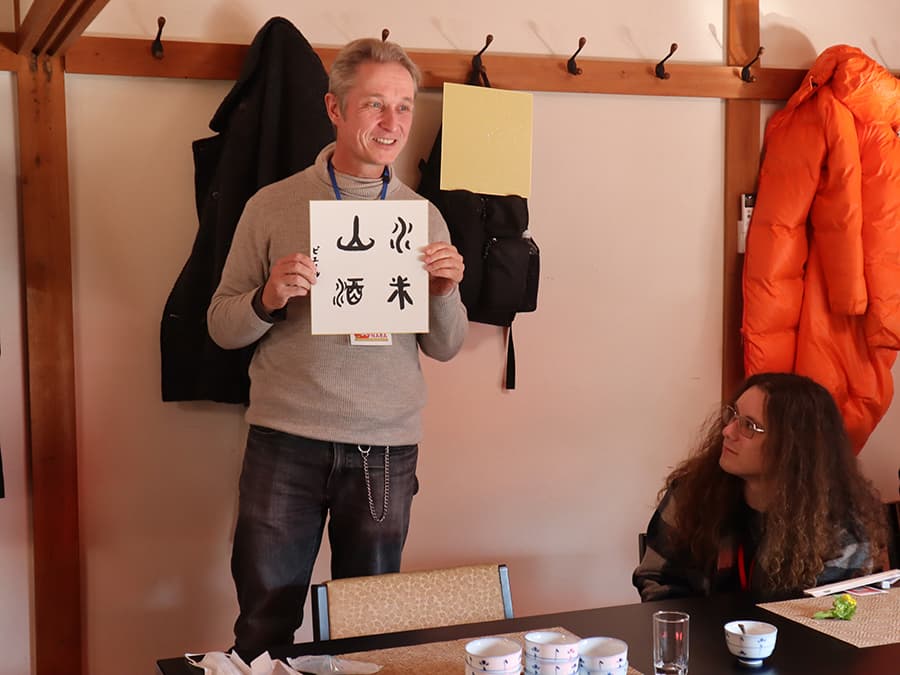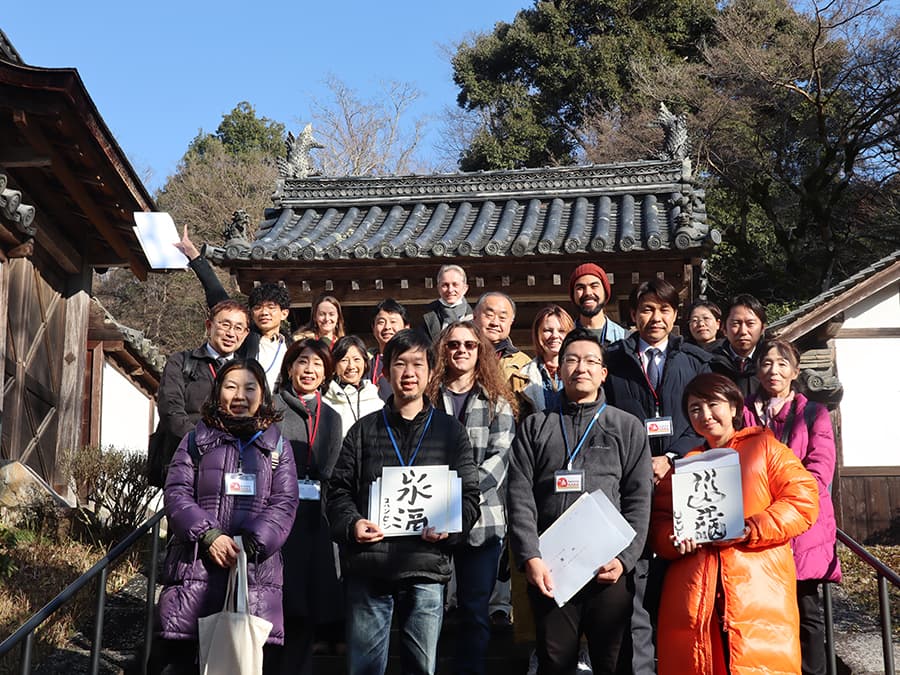“Japanese cuisine is Japan’s proud food culture. Its roots are in Nara.” The “Japanese Food Pilgrimage – NARA” project plans gastronomy tourism where you can learn about the roots of Japanese food and experience the culture.The seventh and final event featured a special program at Shoryakuji Temple, the birthplace of Japanese sake, where visitors could observe the preparation of Bodaisen, which is normally closed to the public.
Bodaisen Twice-brewed Sake at Shoryakuji Temple, the birthplace of Japanese Sake (Normally closed to the public) Limited special opening to the public, special talk by the chief priest and brewer and calligraphy experience.
~Lunch of traditional Buddhist vegetarian cuisine with Bodaimoto Kasujiru (soup with a sake lees base), green tea & special dessert.
The 7th tour was held on January 22nd with 15 guests to Shoryakuji Temple (Bodaisen-cho, Nara City), the birthplace of Japanese sake.At Shoryakuji Temple, we had a special opportunity to observe the sake preparation process, which is normally not open to the public, and spoke with Chief Priest Hironobu Ohara and Aburanaga Sake Brewery President Chobei Yamamoto about “Shoryakuji Temple and Bodaimoto” and its revival. It is full of unique experiences such as listening to the calligraphy experience taught by the chief priest, enjoying traditional vegetarian cuisine that has been restarted for the first time in four years, Nara sake, sweets made by the chief priest’s wife, and matcha made by the chief priest himself. It was a day.
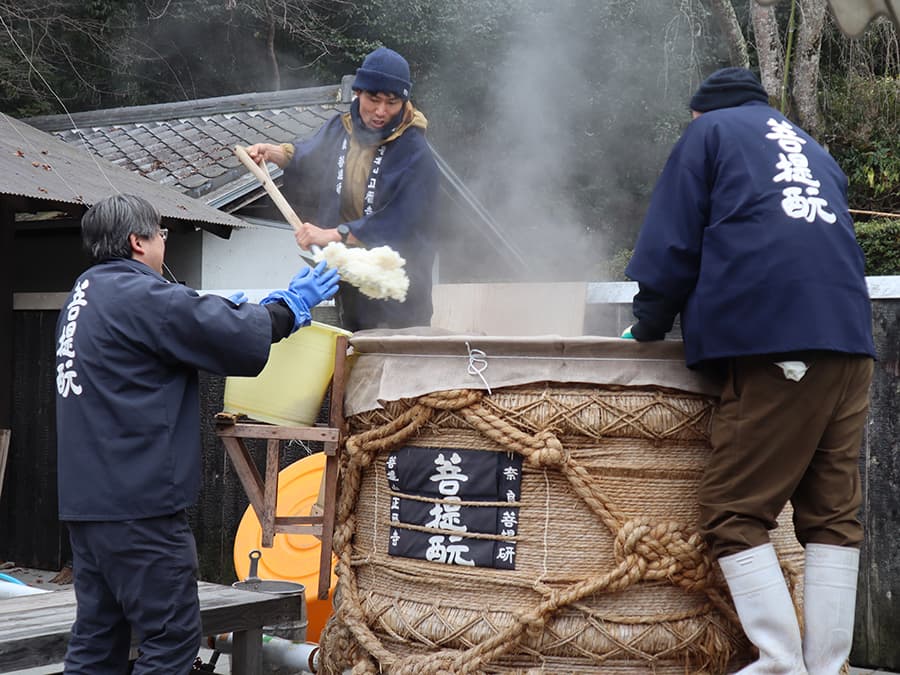
Watch the traditional "Bodaisen Prepared twice" revived 25 years ago at Shoryakuji Temple, the birthplace of Japanese sake
At 9 a.m., the bus departed from Kintetsu Nara Station, and the lead staff member, Mr. Ururu Kaigo, explained the purpose and itinerary of the tour.
“Nara has food and seasonings, Chinese herbal medicine, alcohol, and tea, which have roots dating back 1,300 years, and it can truly be said that the roots of gourmet food are in Nara.” “I want to create a program that will make people say, ‘the roots of gastronomy are in Nara,○○○!’ Please feel free to share anything that left an impression on you on today’s tour.”
Next, an English interpreter gave an easy-to-understand lecture on the history of Japanese sake, how it is manufactured differently from wine, and how the taste differs depending on how well the rice is shaved and the environment of the brewery. Approximately 20 minutes southeast by bus from downtown Nara, the ancient temple Shoryakuji Temple is located at the end of a rural village landscape filled with fields.
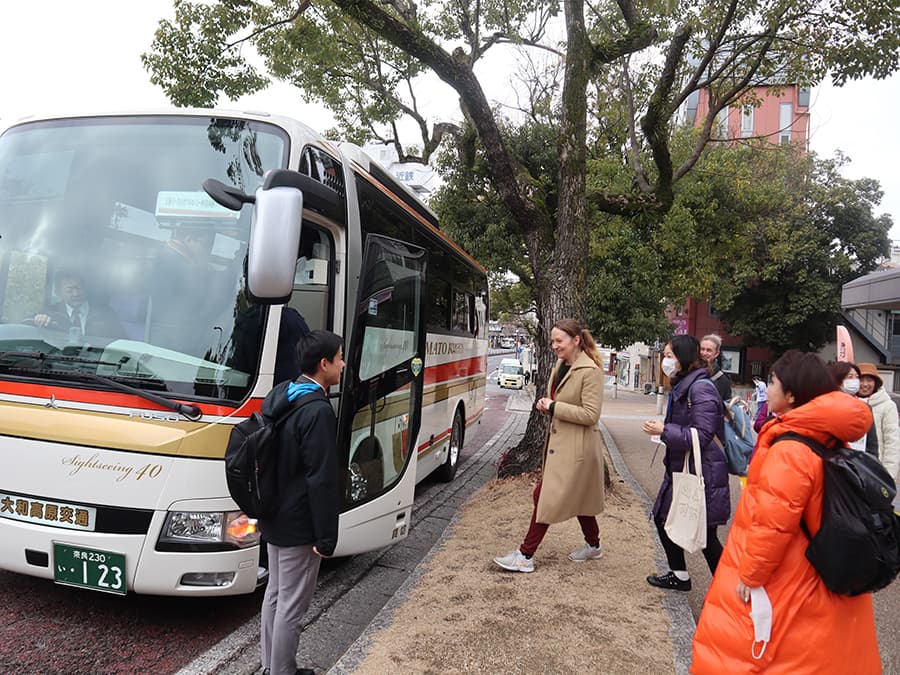
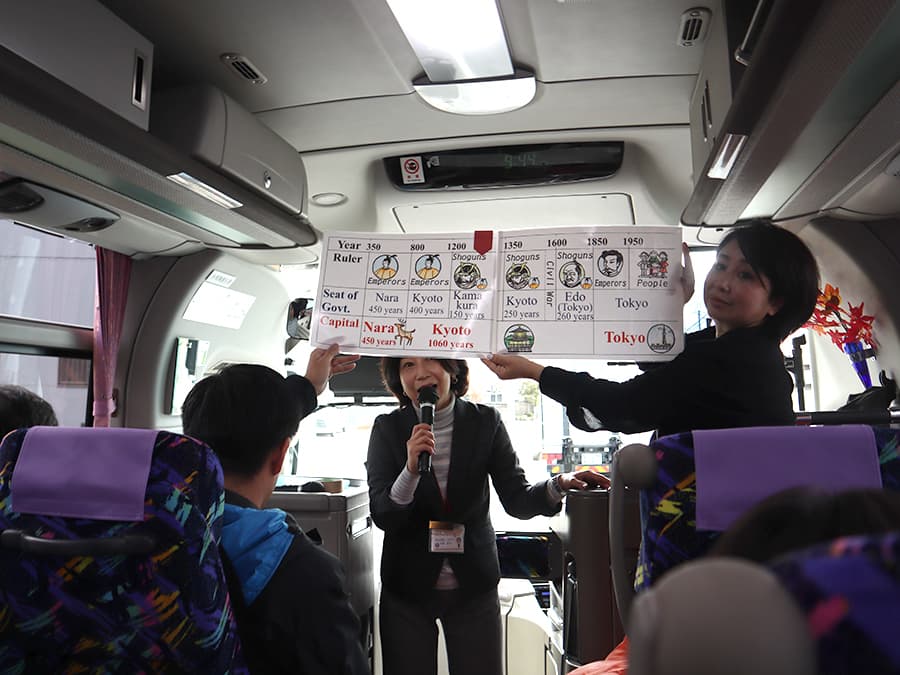
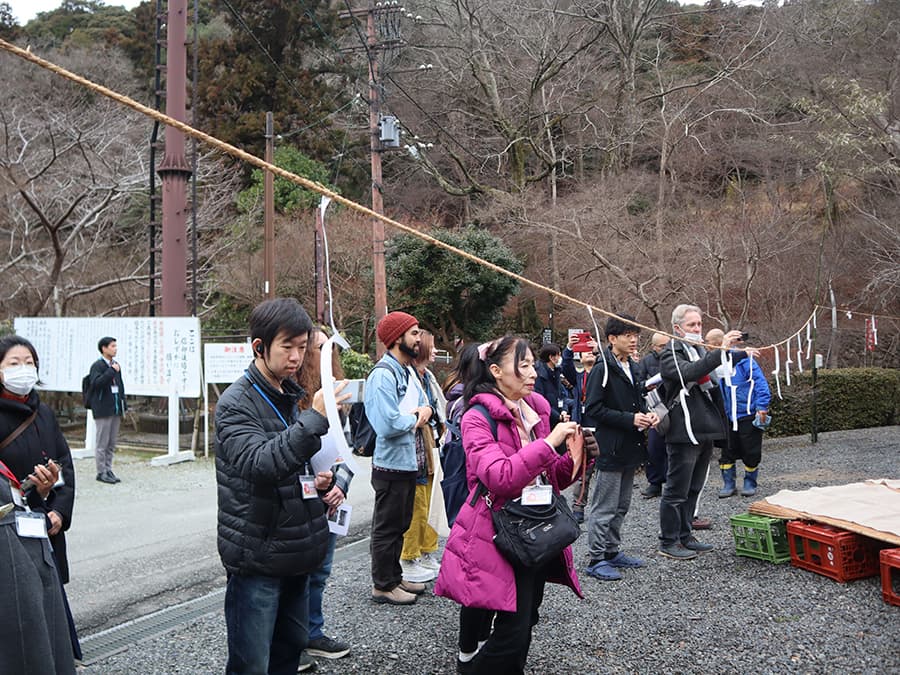
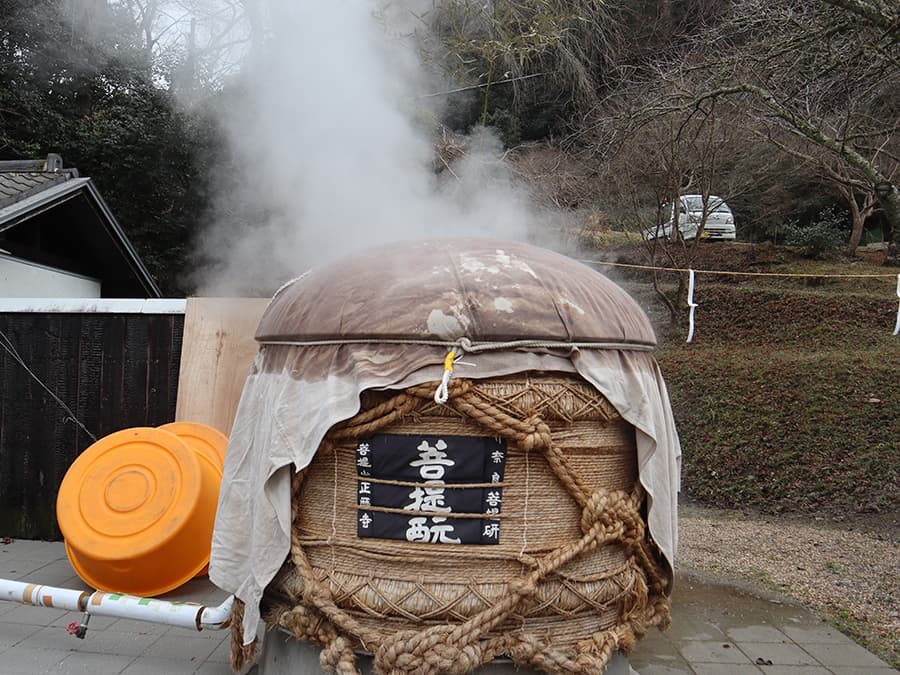
Shoryakuji Temple is the birthplace of Japanese sake, and during the Muromachi period, sake technology was established and “Soboshu” was brewed, but as the temple declined, sake production also ceased.
In 1995, the temple collaborated with people involved in sake brewing, research institutes, and universities in Nara Prefecture, and the restoration project “Nara Prefecture Bodaimoto Sake Production Study Group” was launched.
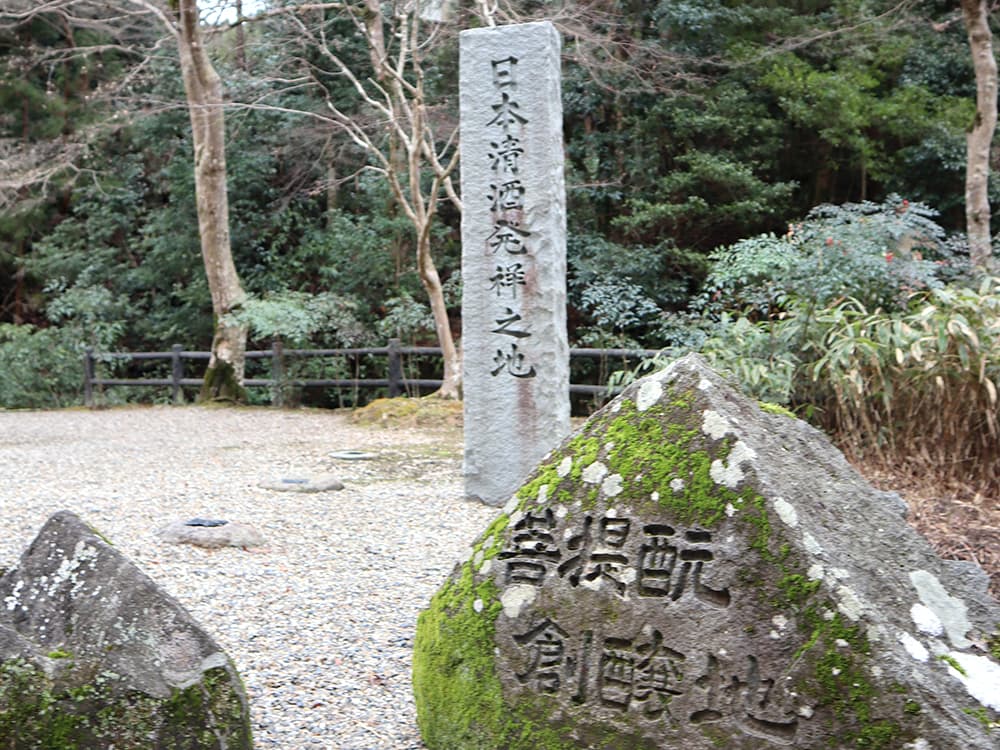
Cheers as the steamed rice rises with white steam
Twice brewing of sake “Bodaisen”
Meanwhile, the steam from the koshiki was getting whiter and stronger due to the cold air around it, and the participants were busy listening to the story and taking pictures of the koshiki.
People began to gather around the koshiki, and the work began by using shovels to transfer the steamed rice into buckets, carrying it to a table covered with linen cloth, and spreading it out.
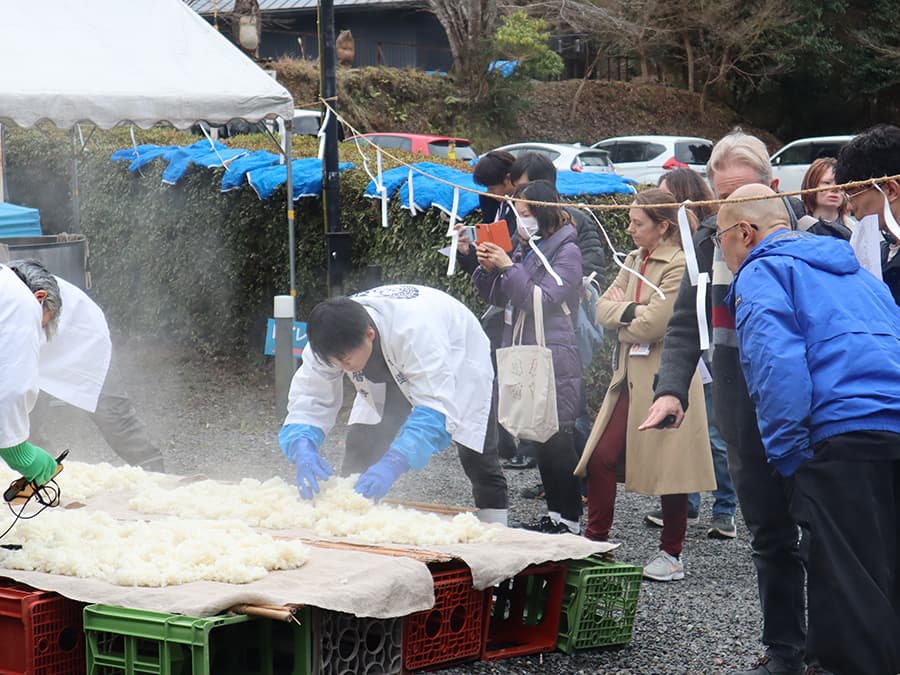
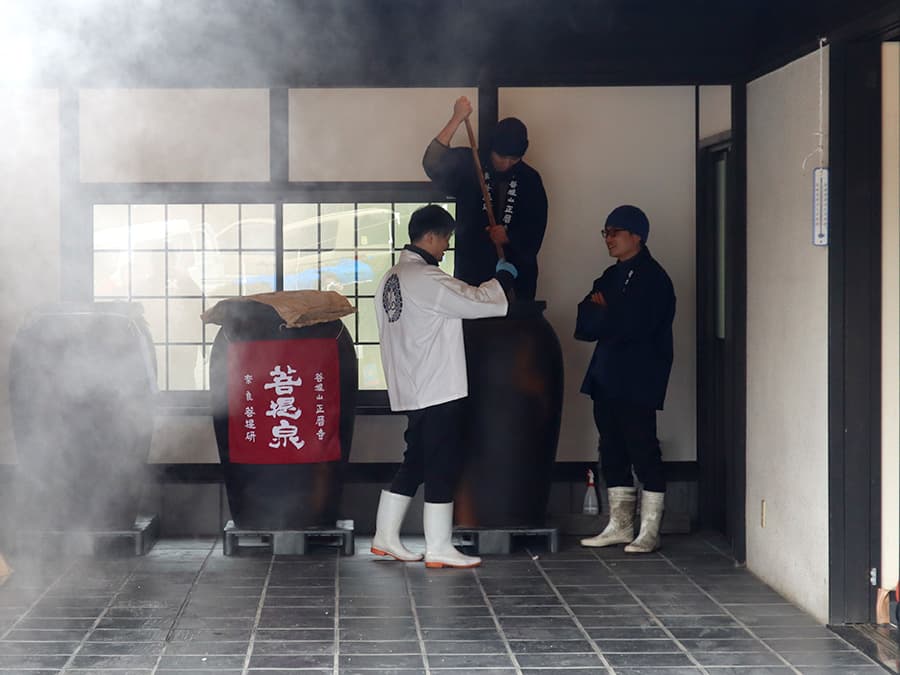
Bodaisen is a sake brewed with this steamed rice, koji, and “Soyashi” water (sterilized water fermented with lactic acid). The raw rice used is “Tsuyuha Kaze”, the only rice in Nara Prefecture that is suitable for sake brewing and is grown on the territory of Shoryakuji Temple.
The water used is Iwashimizu, which springs from the same temple, and is an original product of Shoryakuji Temple.
By the way, Shoryakuji Temple’s sake brewing license is the only one in Japan for a temple.
Toward the end of the event, there was a performance in which the chief priest blew a conch shell to express his wish for the sake preparation to go well, and everyone cheered with joy at this performance.
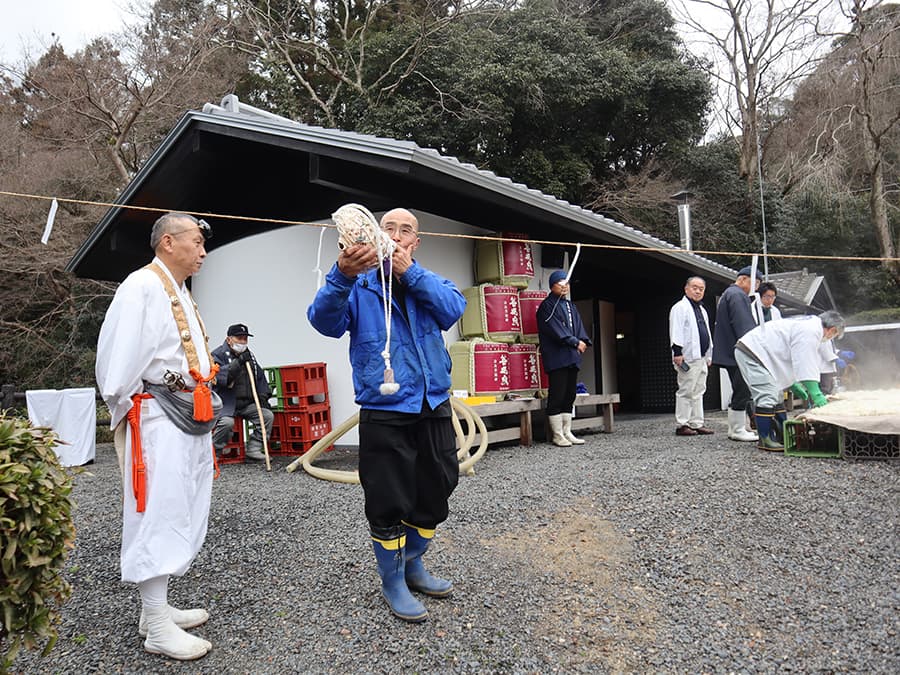
Listen to the history of the temple while looking at the garden and precincts at Fukuju-in, and view the principal image at Ruriden.
After observing the preparation of Bodaisen, we listened to the chief priest explain the history of the temple while admiring the garden and grounds from the edge of the guest hall, Fukujuin (a National Important Cultural Property of the Edo period).
The descending wisteria, which is the family crest of the Fujiwara clan, indicates that Shoryakuji Temple, like Kofuku-ji Temple, was a temple to receive the monks of the Fujiwara clan, which is why the building is in keeping with Kyoto culture.
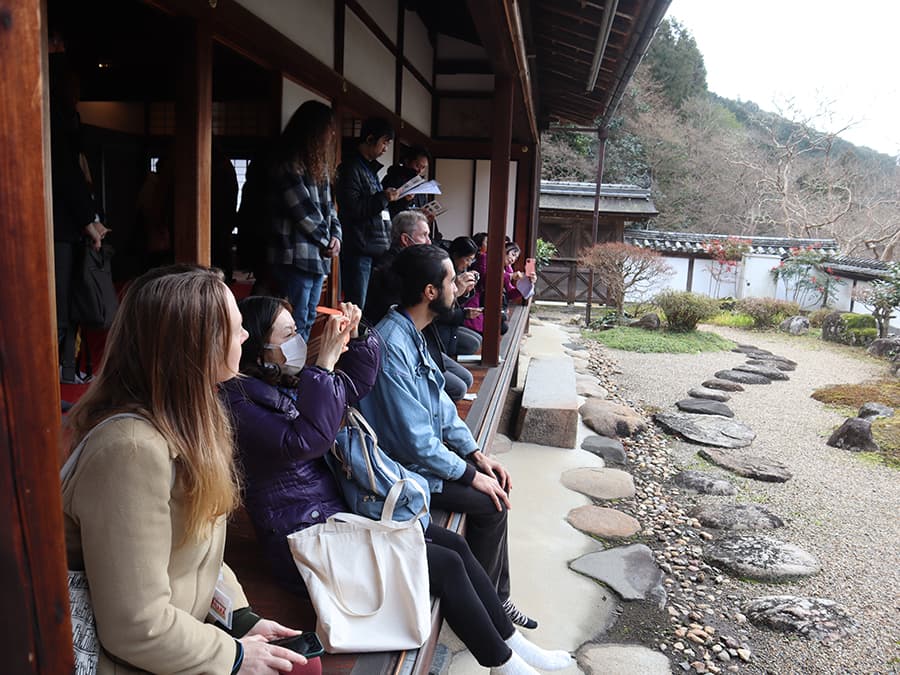

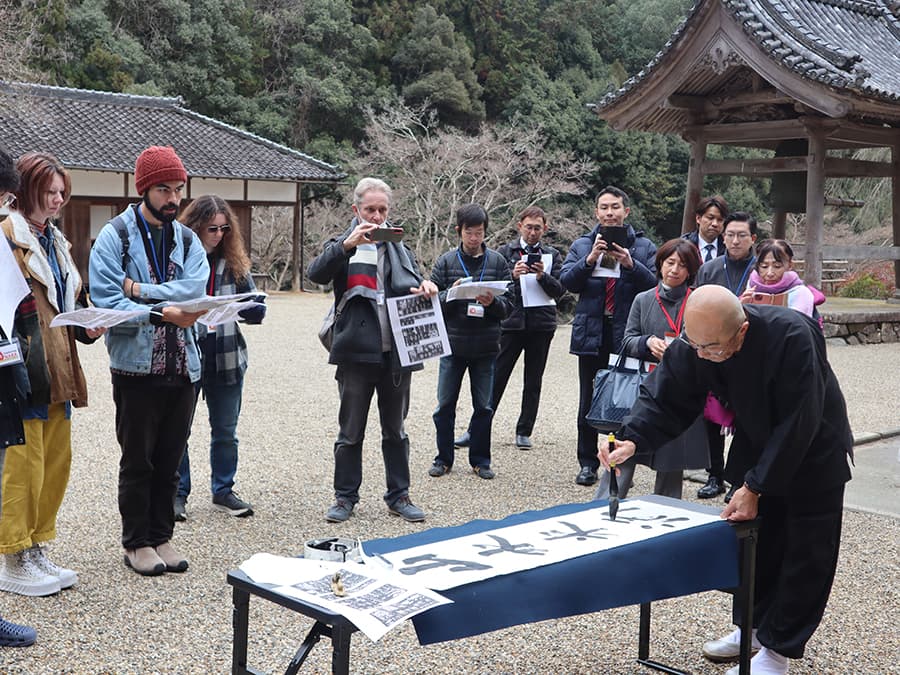
Experience calligraphy at the main hall. Instructions on the formation of letters and brush strokes by the chief priest

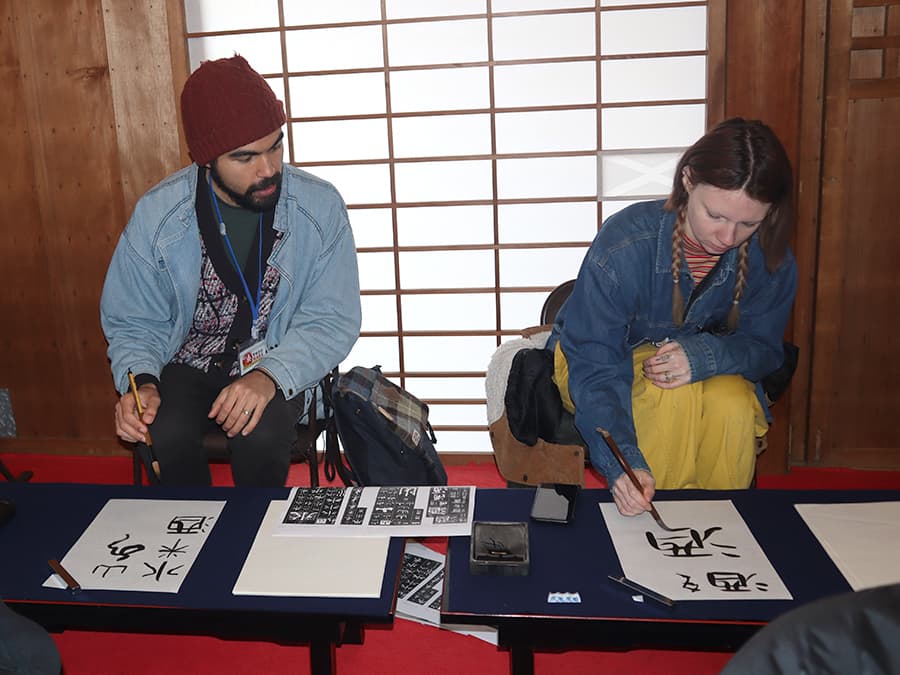
Lunch time with Nara sake such as "Soshun Gozen(Early spring meal)", a traditional vegetarian cuisine revived after 4 years, and "Soboushu'' and "Bodaisen'".
The dishes are all homemade by the head priest’s wife, Mayumi Ohara, and her helpers, using mainly rice and vegetables grown within the temple grounds.
The table is decorated with rapeseed flowers that evoke the feeling of early spring, and includes a variety of vegetable dishes, including some rare ones, such as pickled “Itonankin”, yacon tempura, and kinpira.Homemade sesame tofu, black rice, and bodaimoto. Kasujiru was served.

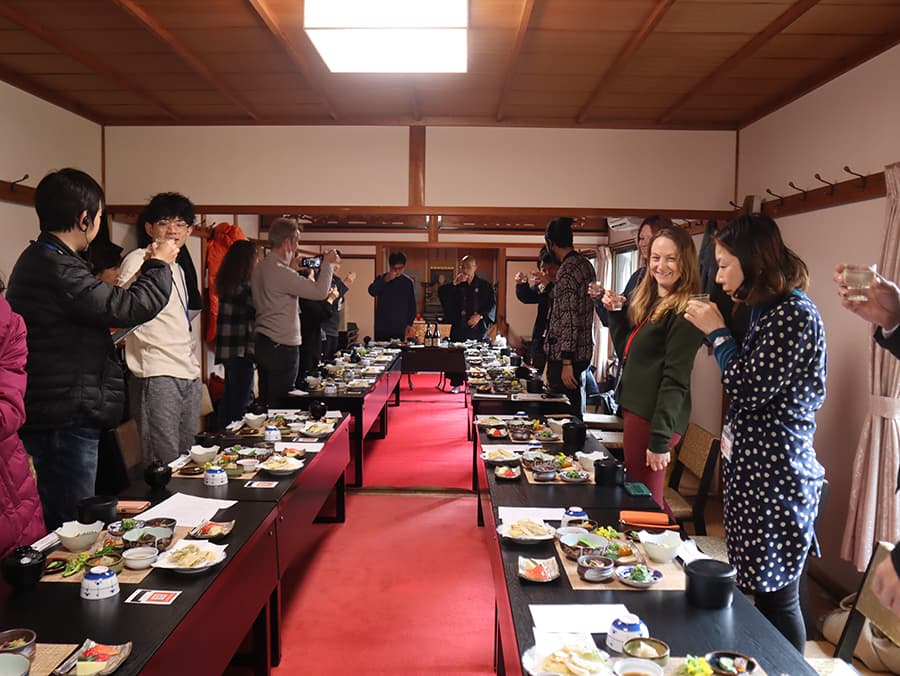
The chief priest’s wife explained the cooking with the vegetables in hand and answered questions about the recipe. During the meal, Mr. Kazuyuki Mizukami of the Nara Prefecture Sake Brewers Association and the chief priest served sake, and everyone enjoyed a variety of Bodaimoto-made sake along with the food.

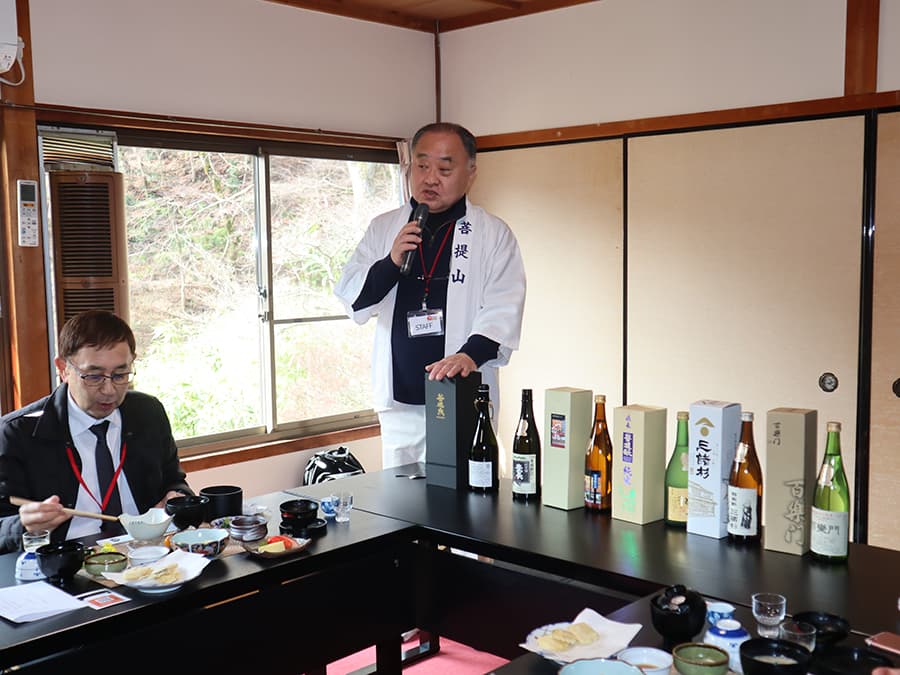
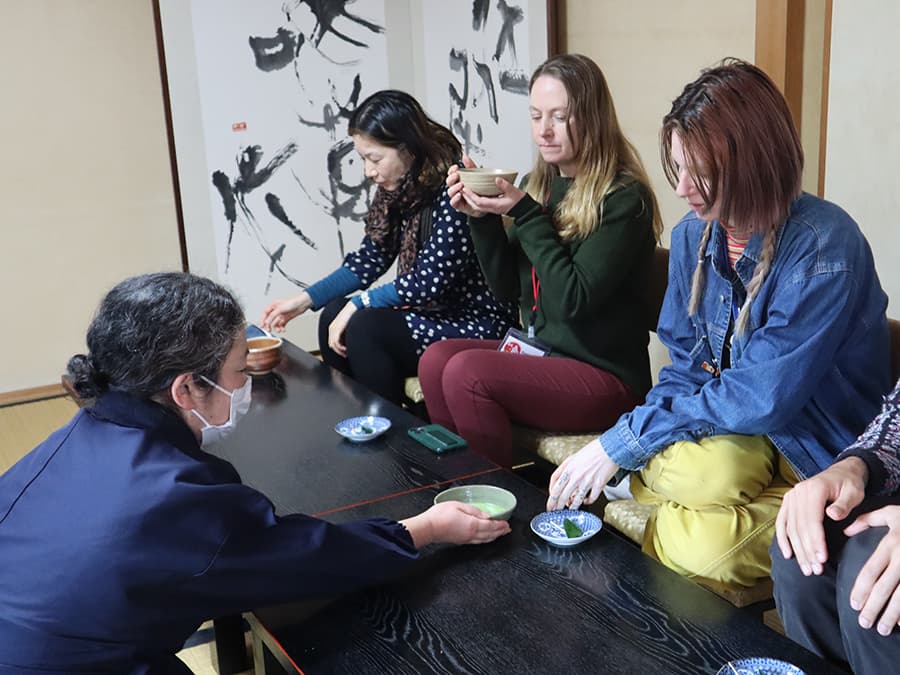
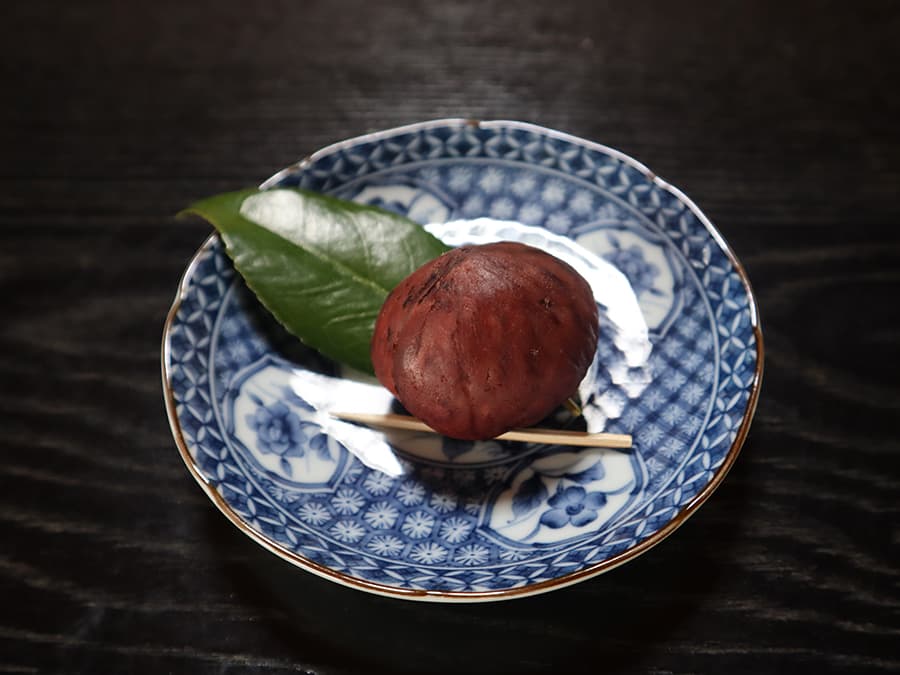
Enjoy the friendly atmosphere, presentation of colored paper, and delicious sweets and matcha tea
